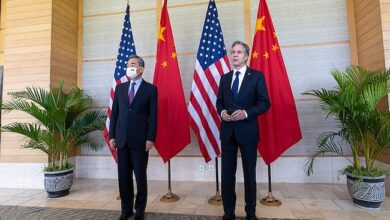Advancements in tech: Bringing us together or tearing us apart?

Ours truly is a technology-driven world. The fact is, our gadgets saturate practically every aspect of daily living, from our work to our home lives. Technology shapes the way we learn, the way we do business, and even the way we connect with friends and loved ones.
On the surface, it would seem that the popularity of today’s tech means it’s serving a vital, perhaps even irreplaceable, service in our lives. But, looking a little deeper, you have to wonder if this brave new world really is all it’s cracked up to be. Is today’s technology making our world better or worse? Is it bringing us together, or tearing us apart?
Pros
When it comes to modern technology, there is a lot out there that’s worthy of praise. For example, thanks to evolutions in web accessibility, persons with disabilities now have more power to access information and pursue their education. Because of these technologies, persons with disabilities are also better able to develop robust careers and to communicate easily with loved ones and colleagues across the globe.
Individuals with disabilities can use the web to overcome challenges that might be limiting in the physical world. If they cannot attend school in a physical classroom, for instance, then school can come to them via the world wide web. If working a 40-hour workweek in a physical office isn’t feasible, the digital environment makes it possible to work the equivalent of a full-time job right from the comfort and safety of their own home.
But it’s not just individuals with special needs who are reaping the rewards of digital technologies. Advanced tech has long since made its way into traditional and virtual learning environments.
This includes the increasing use of artificial intelligence (AI) to drive individualized and highly responsive learning for children at all grade and skill levels. This helps children advance at their own speed, build on their particular strengths, and address potential weaknesses. Above all, it makes learning more interactive, more engaging, and more effective insofar as it enables truly child-focused learning. And when it comes to technology bringing people together, there is perhaps no better way to prepare children to thrive in today’s tech-driven, globalized workforce than to cultivate their skills and equip them with the best possible education.
Additionally, the rise of 5G technology is enabling people from even the remotest and most inaccessible parts of the world to access the internet and connect with the outside world. And that means that the world is far smaller and more connected than it has ever been.
Another exciting attribute of today’s technology is simply its capacity to make life easier by accomplishing the mundane daily tasks that we too often take for granted. For example, we’re now experiencing the rise of the driverless car. Though the technology is still very much in development, the promise of this technology is immense.
It’s being developed with the intention not only of making our roads far safer but of helping promote the independence of the elderly and persons with disabilities, who may be physically unable to drive. With more access to transportation, people who had once largely been confined to their homes or dependent on the help of others may soon be able to get out and about in the world, whenever and wherever they choose.
Cons
With every sweet, though, there comes bitter. And with every benefit of today’s technology there comes a potential drawback. Perhaps the most significant and obvious detriment, of course, is the impact on personal relationships. After all, when you’re consumed by your devices, it can make it hard to focus on the people right in front of you. And that can put a big strain on relationships, especially if you don’t realize you’re doing it.
For example, if you are always busy with or worrying about your phone, the quality of the time spent with loved ones will deteriorate. Communication is likely to suffer, which is a particular threat to romantic relationships. Spouses and partners who do not feel valued or prioritized by their significant other may well turn to others for comfort and validation–and, ironically, digital platforms are often a prime locale for reconnecting with old flames or igniting new ones.
Another issue with today’s tech is that it can create a false image of reality, which can lead to depression and anxiety, especially if you begin to compare yourself to the (often doctored) images that people post on their social media pages.
In fact, studies show that excessive use of social media is strongly linked to mental health disorders, especially among teenage girls. Girls who are frequent users of social media, for example, tend to have lower self-esteem and higher rates of depression, anxiety, and suicidality.
Additionally, the advent of social media is also associated with increased school bullying, particularly in the form of cyberbullying. According to recent estimates, for example, almost 40% of children aged 12-17 have been bullied online.
These experiences are not only traumatic in the moment, but can have long-term impacts on the child’s psychological, social, and academic functioning. Children who are cyberbullied, for instance, are more likely to develop mental health and substance use disorders and to fall behind or even drop out of school.
The Takeaway
There’s no question that technology drives our world today. It has dramatically altered the way we live, meaning that our work, school, and social lives look far different than they did just 50 or 100 years ago. In many ways, these changes are a significant good for our lives, especially for people who have traditionally been marginalized, such as the elderly, persons with disabilities, and those who live in some of the world’s most remote regions. Technology is enhancing the world of business and the world of education. It’s making ours a truly interconnected world. And yet, with every good comes some bad, as we can so easily become consumed by our devices, losing touch with people we love, those right in front of us. And it can also lead us to prefer a false reality over our own.




